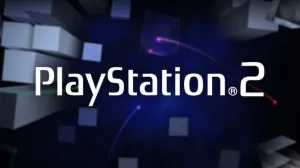When we talk about the evolution of storytelling, webcomics have undeniably carved out a significant niche, transforming how we consume comics as an artform. The digital platform, Webtoon, is designed for vertical scrolling and has created a vibrant community of creators and readers, offering a fresh, accessible way to engage with diverse stories. Now, a new wave is emerging as some of the most popular Webtoons are making the leap from screens to shelves, finding a home in traditional print publishing. Little, Brown Young Readers (LBYR) is at the forefront of this movement, particularly with its focus on bringing authentic queer stories to a wider audience. This September marks a significant moment with the release of Peglo’s To The Stars And Back, followed by Toonimated’s Love Me To Death in January 2026. These titles join Emily Erdos’ and Deya Muniz’s Blades of Furry, which hit shelves this past May.
Videos by ComicBook.com
Each of these titles is adapted from its highly successful Webtoon origins. This shift isn’t just about a new format; it’s about validating a new generation of storytellers and ensuring that previously digital-only, often queer-centric, stories gain the popularity they deserve in print. As these stories transition from screen to shelf, they bring with them the unique voices and perspectives that first captivated millions online, now ready to charm a whole new readership.
The Journey from Digital Scrolls to Tangible Tales Is a Dream Come True for Creators



The transition from a dynamic, scrolling digital format to a static, physical book presents both exciting opportunities and unique challenges for creators. For many, seeing their work in print is the culmination of a lifelong dream‒ a tangible testament to countless hours of dedication. Speaking exclusively to ComicBook, Toonimated, the duo behind Love Me To Death (Tara Mueller and Julian Jauregui), expressed their awe at the prospect: “When we started working on Love Me to Death, we honestly never even dreamed we’d be able to hold a physical version in our hands one day.” For many creators whose stories have only been published on digital platforms, this sense of awe is a common feeling. Mueller and Jauregui praised the collaborative and supportive experience with LBYR, eager to share their story in this “beautiful new format.”
Similarly, Peglo, the creator of To The Stars And Back, found the process of going from digital to print to be “amazing and also incredibly insightful.” The unique conversion from a digital scrolling format to a physical book offered a steep, yet rewarding, learning curve. Peglo reflected on the one-of-a-kind experience for creators: “It feels so surreal to be able to physically hold the book in my hands, it’s been the biggest dream of mine since I was a little kid.” This physical edition of To The Stars And Back, Peglo noted, brought a new level of appreciation for the effort invested, making the “blood, sweat and tears” feel real and meaningful.
Deya Muniz and Emily Erdos, the creative team behind Blades of Furry, also shared emotional responses to seeing their work in print exclusively with ComicBook. Emily Erdos described tearing up upon seeing Blades of Furry: Volume 1 at her favorite bookstore, experiencing an “invigorating feeling seeing our story in a physical form.” Deya Muniz added to this, cherishing the idea of readers “stumbling upon Blades of Furry at their favorite bookshop, and being able to display it on their shelves at home.” This desire for a lasting, physical copy underscores the undying appeal of print, even in an increasingly digital world.
Andrea Colvin, Editorial Director at LB Ink, affirmed LBYR’s commitment to this evolving landscape, stating, “Webcomics‒ and Webtoon‒ have opened up an exciting world of visual storytelling, and we’re paying attention!” This attention is clearly focused on amplifying diverse voices, especially within the queer community, as all three of LBYR’s Webtoon adaptations so far proudly feature queer protagonists and storylines. This strategic move by LBYR not only recognizes the power of webcomics but also champions the essential need for authentic representation in mainstream publishing. The rise of Webtoon-to-print adaptations signifies a pivotal moment for both the publishing industry and the vibrant community of digital creators, promising a future where diverse voices are heard louder than ever before.









